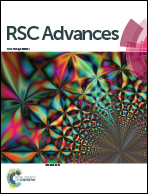Enhanced biogas production from wheat straw with the application of synergistic microbial consortium pretreatment
Abstract
Lignocelluloses featuring complicated structure and poor degradability usually require pretreatments prior to their utilization; synergistic microbial systems are ubiquitous in nature and now exhibit appealing features that inspire mounting interest in developing functional microbial consortia for biotechnology development. In this study, we introduced a microbial consortium composed of bacteria and fungi that synergistically exhibited great abilities of lignocellulose degradation. A pretreatment of lignocelluloses by using this functional microbial consortium was designed and results showed that enhanced degradability in wheat straw and the broth containing amounts of organic materials (e.g. volatile fatty acids and carbohydrates) that could be used for biogas synthesis were detected in the pretreatment system. A subsequent anaerobic fermentation with the application of the pretreated system showed a 39.24% and 80.34% increase in total biogas and methane yield as well as a faster startup in a 20 day production process compared to the process based on the untreated system.


 Please wait while we load your content...
Please wait while we load your content...